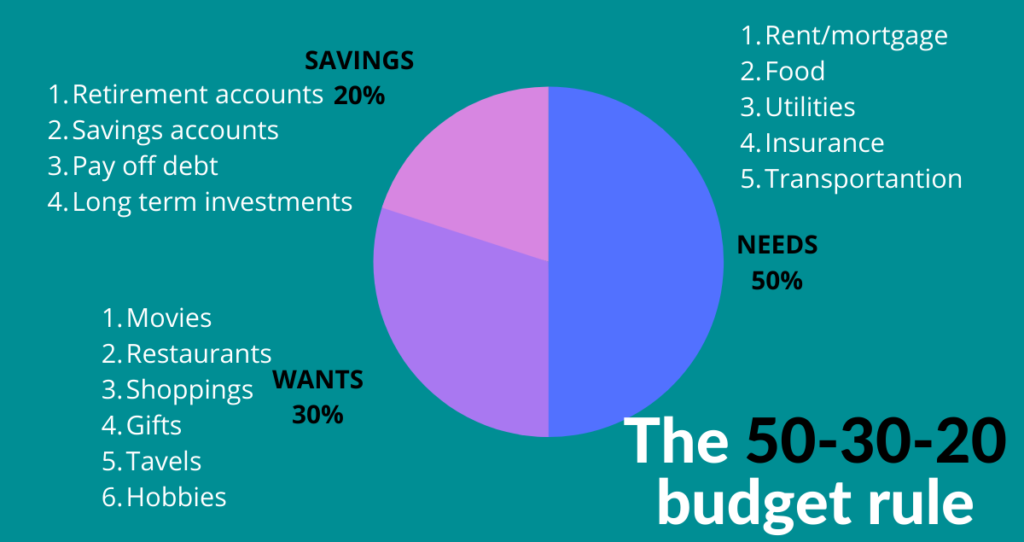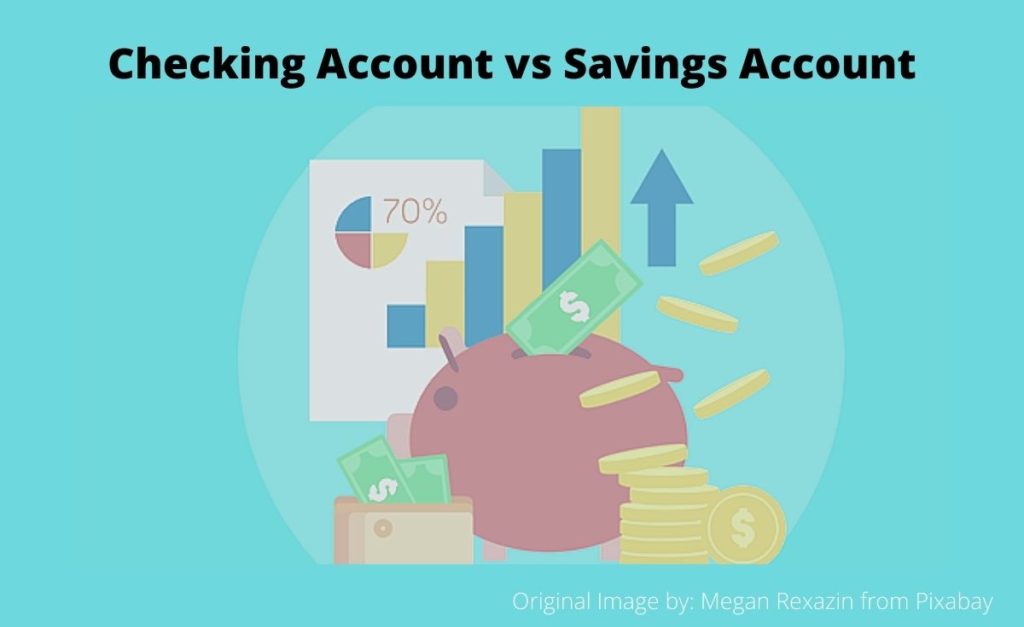Saving goals are critical in your financial planning. This is because saving goals allow you to properly manage your income and your expenses, and allocate portions of your paycheck in different accounts designed to fulfill certain financial goals. For example, you can save 15% of your paycheck in retirement accounts, 65% in a checking account to pay bills, 5% in an emergency fund, 5% in a 529 college education plan, and the remaining 10% in a brokerage account.
When it comes to saving money, however, most people know they should save money but have no idea what to save for due to the lack of saving goals. That is why statistically speaking, 27% of Americans have less than $1,000 while 12% have no savings at all, according to a recent date published by YouGov.
The truth is that if you want to take control of your finances, you need to make saving your daily habits and establish saving goals. Saving goals becomes your motivation and allows you to keep up with all your financial needs. If you are struggling to establish savings goals or don’t know what to save money for, this article has a list of saving goals you can easily start and take control of your finances in no time.
Here are the 10 best saving goals everyone should start.
1. Save money for College
A college fund is one of the best saving goals everyone should have due to the high cost of college tuition, books, living arrangements, transportation, and fees. Saving money for college allows you to avoid student loans. If you are a parent, you can also save money for your children’s education. An effective way to save for your children’s education is to use a 529 college savings plan which is a tax-advantaged plan designed to help you save for your dependent education. This plan is also known as a qualified tuition plan as defined by the U.S. Securities and Exchange Commission.
According to SmartAsset, you can contribute up to $85,000 into the 529 plan within 5 years without triggering the gift tax.
Benefits of opening a 529 college savings plan
- You grow the account tax-free
- Parents and relatives can make contributions to the 529 savings plan
- There are two plans to choose from: Prepaid tuition plans and education savings plans
- You avoid costly student loans
- You can enjoy a high return on investment(ROI)
- The education savings can also be used to cover lower education levels such as K-12
- Some or all of your contributions may be tax-deductible
- You can change beneficiaries
The 529 plan is one of the best saving goals as it gives you and your loved ones a good foundation in life without getting stuck with expensive student loans. Your children will also perform better in school because they will not be worrying about where to get the money for college or how they will pay it back.
Related article: 10 ways to go to college without student loans
2. Save for an emergencies
An emergency fund is one of the best saving goals you will have on your list. Bad things happen unexpectedly at any time and anywhere in the world. A simple emergency can easily turn your financial world upside down. Before we move forward with emergency savings, let’s see how many Americans are actually saving. According to a report from Bankrate, more than 1 in 5 Americans have no emergency savings. In other words, 1 in 5 Americans cannot survive a simple emergency such as a short-term job loss.
Regardless of who you are, you cannot avoid emergencies. For example, you can easily get into a deadly car accident regardless of how well you drive. You might also get laid off without a notice. Emergencies like these can turn your life upside down if you don’t have money saved on the side. To better cope with situations like these and establish a financial cushion, saving for emergencies should be part of your saving goals and financial plan.
To start saving for emergencies, establish an emergency fund with your local bank or credit union. The process of opening up the fund is similar to opening a normal checking account or savings account. Once the account is open, allocate a small portion of your paycheck to the account until you have saved the desired amount.
You might also like: Should you invest your emergency fund for better returns?
How much should you save for emergencies?
While emergency funds vary by lifestyle, there are some guidelines as to how much you should save for emergencies. Typically, you should save anywhere between 3 to 6 months of expenses. For example, if your monthly expense is $2,000, your emergency fund should have between $6,000 and$12,000.
Saving more than six months of expenses in an emergency account is not a good idea as the cash will be sitting idle in the account without earning you a return. Six months is also enough to turn your situation around. On the other hand, saving less than 3 months in your emergency fund might not be enough to cover your emergencies such as a costly medical bill or covering your expenses in the event of a job loss.
Related article: How to save money in 8 steps
3. Save money for a house down payment
Buying a house is one of the biggest expenses you will have in your lifetime. Yet, most people don’t realize how expensive it is to purchase and own a home until they own one. The house costs thousands of dollars and the majority of people finance the purchase with mortgages. While there is nothing wrong with buying a house using a mortgage, upfront costs such as down payment, closing costs, and overhead expenses such as interest charges, property tax, and homeowners insurance can cripple your finances for many years.
What if you can buy a house without exhausting your finances or borrowing too much? To do this, you will need to take crucial steps before and after purchasing the house. These measures start with the saving goals you establish and how you approach the house purchase process.
One of the most important saving goals to lower the cost of buying a house is to have an adequate down payment. With a large down payment, your monthly payment becomes lower due less interest charges. Borrowing less money also allows you to pay off the house faster or use excess funds toward other saving goals such as retirement savings.
For a conventional mortgage, you need at least 20% in down payment to avoid private mortgage insurance(PMI). Even if you are buying a house with home loans that require a much lower down payment such as FHA loans and VA loans, it is always best to put down as much as you can to lower the cost of the house.
Related: How to save for a down payment?
4. Save money for a car purchase
Having a car is critical in your life especially when you depend on it to go to work or fulfill other personal goals. Without a car, for example, it could be difficult to commute to and from your job. This in turn can lead to a loss of job unless you have other means of transportation such as reliable public transportation. This is why saving for a car is one of the best saving goals that you should focus on.
Another benefit of saving money for the car is that it helps you borrow less money when purchasing the car. For example, if you have saved 80% of the total cost of the car, you will borrow only 20%. This will result in a small monthly payment due to lower interest charges.
Additionally, purchasing a car, especially a new one with a loan is never a good idea as cars depreciate much faster. A new car loses 20% of its value in the first year and 10% to 15% each year for the next four years. By the time you finish paying it off, the car will be worth half of its initial value. Due to this fast depreciation, you should also avoid buying brand-new cars.
5. Save money for your travels
Is traveling around the world one of your dreams? If so, establishing a travel account should be one of your saving goals. Traveling around the world can be very expensive depending on where you travel and how often.
But, if you have enough money saved or have passive income to take care of your travel expenses, you can successfully achieve your travel goals. To save money for your travels, establish a travel savings account and allocate a small portion of your income to the account. In no time, you will slowly accumulate enough money to pay for costly hotel reservations, food, airfares, travel agents, transportation, etc.
6. Save for retirement
Whether you want it or not, a day will come and you will retire. Retiring means that you will no longer be working and your active income will cease to exist. The paycheck will run dry. Being retired, however, does not mean your expenses will also disappear.
How can you take care of your expenses when you are no longer making money? This is where retirement saving goals come into play. Most people never retire simply because retirement was never one of their saving goals. What most people do is make money and spend it all without allocating a small percentage toward retirement savings.
The reality is that the money you save for retirement is what takes care of you when you can no longer afford to work at an old age.
Here are a few tips to save for retirement.
If your employer offers retirement benefits, start by contributing to your 401(k) or 403(b) plans. With a traditional 401(k), you can enjoy direct tax benefits and grow your account on a tax-deferred basis. Your employer might also match your contributions up to a certain percentage which is free money to help you grow your retirement nest egg much faster. For 2023, you can contribute up to $22,500 and an extra $7,500 if you are 50 or older.
You can also open an IRA to boost your retirement savings. There are two types of IRA which are a Roth IRA and a traditional IRA. The main difference between both accounts is when tax benefits are realized. With a traditional IRA, your contributions might be tax deductible. In other words, you will grow your account on a tax-deferred basis and pay taxes when taking distributions. For the Roth IRA, on the other hand, you make contributions with after-tax money, grow your account tax-free, and take tax-free distributions. The maximum contribution limit for an IRA in 2023 is $6,500 and an extra $1,000 if you are 50 or older.
If you are self-employed or own a small business, there are other forms of retirement saving accounts you can look into. Common retirement saving plans for self-employed and small businesses include SIMPLE IRA, SOLO 401(k), SEP IRA, and conventional IRAs. Here is a complete guide to saving for retirement when self-employed.
You can also purchase assets and investments such as bonds and real estate that pay you passive income and interest to boost your retirement saving goals and build wealth.
Related article: 13 Passive Income Ideas You Can Start Today
7. Save money for a wedding
If you are getting married shortly, saving for a wedding should be one of your short-term saving goals. Even if you are not getting married but your children are, you can still stash money away to cover a portion of their wedding costs. Weddings are costly and most people go broke from weddings especially those who don’t manage their funds well or those who lack savings.
CNBC reported that the average cost for a wedding in the U.S. was $33,900, in 2019. This is a lot of money given the current economic climate. Matter of fact, this amount is more than what millions of people make per year.
To avoid breaking the bank when you are getting married, start saving for your wedding ahead of time. Saving $300 to $500 a month is an effective way to save for a wedding.
8. Save money for a home improvement
If you own a home, there are times you will need to make improvements to it. If the kitchen is too old or the bathroom is falling apart, you will need to spend a few thousand dollars on renovations. You will also need to replace your roof when the time comes. The best way to take care of your home renovation projects is to use your savings.
The biggest mistake most people make is to take out home renovation loans such as HELOCs and personal loans to improve their homes. This is not wise as you end up paying high interest on those loans for many years.
As a consumer, you should always stay away from loans especially when you are not earning anything from them. That is why saving money is always a smart way to take care of home renovation projects.
9. Starting a family
Starting a family is not easy. It requires love, discipline, time, and money. Starting a family comes with birth-related costs as well as ongoing expenses such as taking care of yourself and your expanding family. If you want to start a family make sure that you have saved enough money to take care of your expenses.
10. Investing
Investing your money is one of the best financial decisions you will make. While you can work hard, climb the corporate ladder, and boost your income, the most effective way to reach financial freedom and build wealth is through investing. Before you start investing, however, you must first have some savings which you will utilize to buy investments. For example, if you want to invest in real estate, you will need the money for a down payment, appraisals, mortgage insurance, and other closing costs.
While many people struggle with knowing how much they should invest, investing does not require a ton of money. You can easily start investing with a few hundred dollars every month. What matters is that you start as early as possible to take advantage of compounding interest. If you are afraid of losing money in the market, work with a financial advisor or start with investment products that are less risky. For example, putting money in a high-yield savings account can earn you as much as 5% or more. You can also open a CD account or buy bonds. While these earnings will be relatively smaller compared to what you could earn from risky investments such as stocks and real estate, these returns are better than nothing. All you have to do is to know your risk tolerance and get started.







